Anyone who has even the slightest interest in the important history of the Black Hills should plan a visit to the Old Fort Meade Museum. They founded Fort Meade in the late 19th century (1878) to protect the new Dakota frontier settlements at the beginning of the gold rush era, when they illegally entered upon the reservation of the Sioux nation in the Black Hills. The museum chronicles 66 years (1878-1944) with personal accounts and stories that describe important events.
This post may contain affiliate links, meaning if you purchase something through one of these links, we may earn a small commission at no extra cost to you! Read the full disclosure policy here.
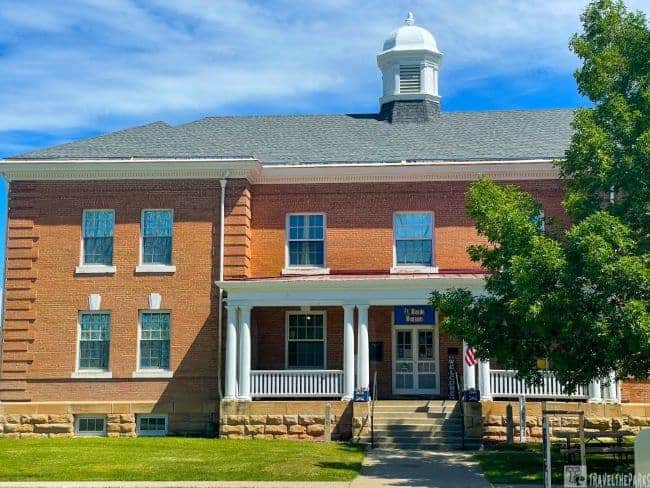
Table of Contents
Navigating Directions to the Old Fort Meade Museum
The museum at Fort Meade is open Mondays through Saturdays from10am to 5pm, May through October. A five-dollar fee is required for the self-guided tour. A small gift shop has t-shirts, books, and small souvenir items. The restroom was clean. They tastefully decorated it with this little gem pictured below (Novelty 2 Holer Outhouse). Gave me a smile.
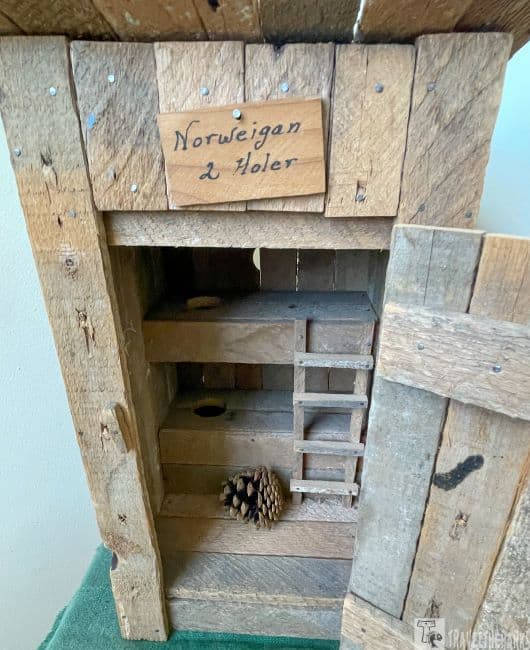
Directions from Rapid City – I-90 W/US-14 W/SD-79 N via EXIT 1A on the left toward Gillette. Take the Junction Ave exit, EXIT 32, toward I-90 Bus Loop. Keep right to take the ramp toward the Motorcycle Museum. Turn right onto Lazelle St/SD-34/SD-79. Continue following SD-34/SD-79 for 1.39-miles. Turn slight right onto Comanche Rd. Turn right onto 4th St. Turn right onto Sheridan Rd.
From Spearfish, Devils Tower, or Sundance – I-90 E/US-14 E toward Whitewood. Take the Lazelle St/SD-34 E/SD-79 N/US-14A W exit, EXIT 30, toward I-90 Bus Loop/Deadwood-Lead. Turn left onto Lazelle St/US-14A E/SD-34/SD-79. Stay straight to go onto Lazelle St/US-14A E/SD-34/SD-79. Continue following SD-34/SD-79. Turn slight right onto Comanche Rd. Turn right onto 4th St. Turn right onto Sheridan Rd.
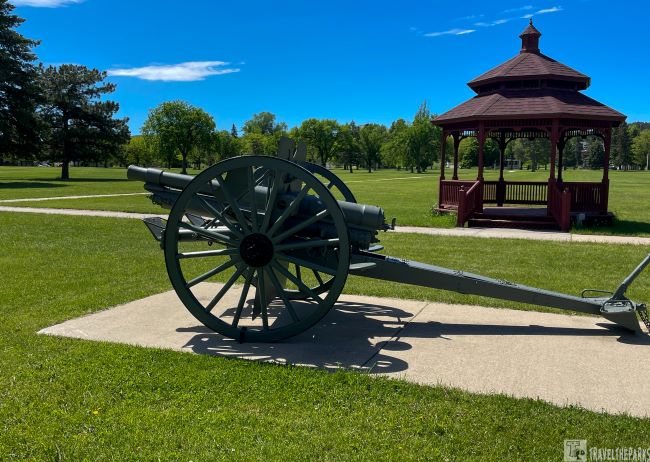
Historic Old Fort Meade & Museum
Unlike Fort Clinch, Fort George and Fort Jefferson, which are traditional masonry forts. Rather, this fort is not confined within walls. Fort Meade became the home of the Seventh Cavalry after the defeat at the Battle of the Little Bighorn. The fort is named in honor of Major General George G. Meade. His victory at Gettysburg was a turning point in the Civil War. General Philip Henry Sheridan chose the specific location to replace the temporary camp near Bear Butte.
The first post commander (1879) was Col. Samuel D. Sturgis, 7th Cavalry. He was the product of a military family, having both his father and uncle served in the Army. His son, Second Lieutenant James G. Sturgis, died during the battle of the Little Big Horn. The original army post was west of Bear Butte and called Camp Sturgis to honor 2nd Lt. Jack Sturgis. The town of Sturgis erected a statue dedicated to Samuel D. Sturgis at the City Park.

What to see at the Old Fort Meade Museum
They listed the Fort Meade District on the outskirts of Sturgis on the National Register of Historic Places in May 1973. Currently, the museum is in the Old Headquarters Building next to the historic Parade Ground. The museum’s historical artifacts include photos, diaries, uniforms, and weapons, displayed across three floors. The timeline memorabilia progresses from First Nations peoples to the current military use of the post.
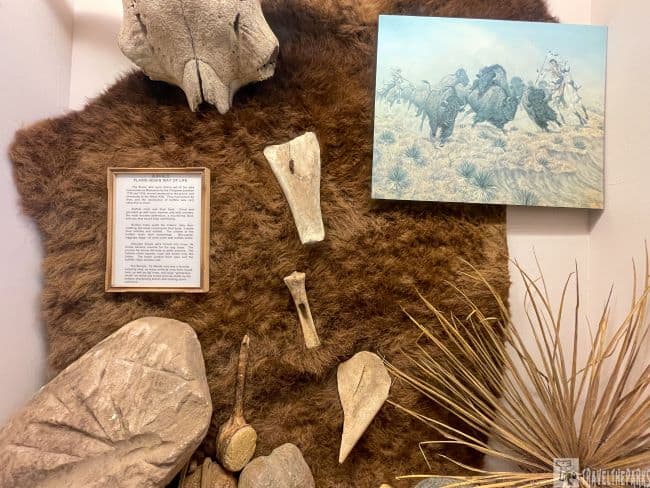
Things to do at Old Fort Meade, South Dakota: Do a Self-Guided Tour
For a better understanding of the exhibits, watch the introductory video. Begin your exploration of the exhibits on the first floor. The displays then will be in chronological order, beginning with the origins of the First Nations through to the end of WWII.
The museum gives a comprehensive interpretation of how the First Peoples lived prior to the invasion of the fur trappers and pioneers. We read through the detailed writings on the conflict that developed as more and more gold seekers reached the area, displacing the Cheyenne and Lakota from their reservation lands (1868 Fort Laramie Treaty).
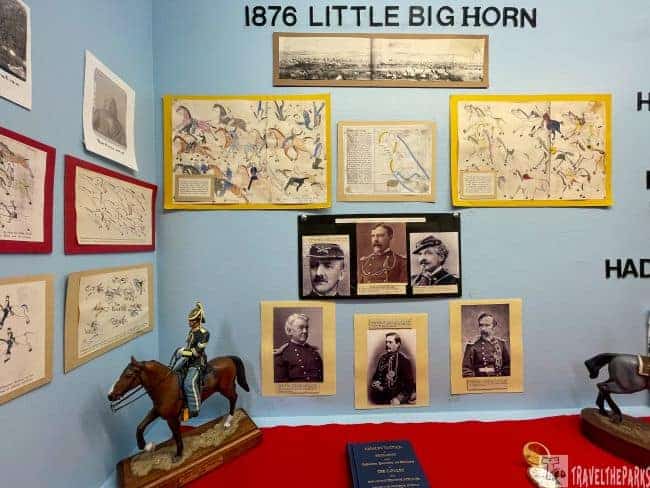
1876 Little Big Horn Exhibit
Lieutenant Colonel George Armstrong Custer’s battle at Little Big Horn in June 1876 was a highlight. The Red Horse pictographic accounts, notes on the key officers and miniatures all painted a picture of the battle. Since we had already been to the Crazy Horse Memorial, we understood his successes. The total 7th Cavalry dead was astounding: 278 men. Notable soldiers were Major Reno (yes, Ella Sturgis, peeper), Captain Frederick Benteen, Captain Myles Keogh and Captain Myles Moylan. Only Reno and Moylan survived.

Reno Room Exhibit
Lots of military history. Glimpse into the daily lives of the military personnel stationed at the fort. Many of the handwritten letters gave us a different perspective. One detailed letter that stuck with me was the unfortunate saga between Major Marcus Reno and Ella Sturgis. Reading it, I felt so bad for Major Reno when he became infatuated with Ella, the daughter of his commander, General Sturgis. It was a poor choice for him to peer at her through their window. So Ella screamed.
Sturgis showed no mercy since he blamed Reno for failing to assist Custer and his son, Jack Sturgis, at Little Big Horn. So unsettled, her father took drastic steps and had the Major court martialled. Dishonorably discharged, he never recovered from the sad event.
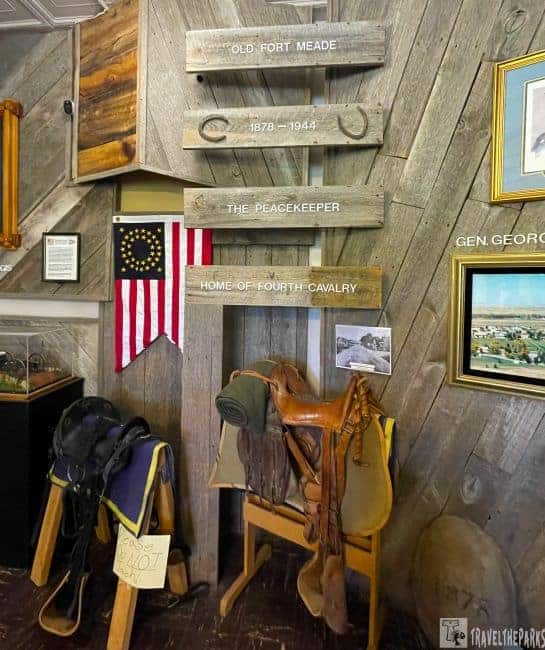
Historic Dakota Territory Conflict Exhibits
We continued wandering through the rooms. Displays on the Buffalo Soldiers of the 25th US Infantry, the 4th US Cavalry, that both served at Fort Meade. The display of Buffalo soldiers was small, but the information was interesting. The buffalo coats and winter wear issued to the soldiers offered some protection from the cold Dakota territorial blizzards.
Additional displays are depictions of A Day in the Life of a soldier, the real safe used by the 7th Cavalry in 1878-1888 later used during the filming Dances with Wolves in 1989, and Comanche the horse only living thing left on the battlefield at Little Big Horn. After the battle, they brought Comanche to Fort Meade. They later sent him to the University of Kansas. They preserved him after death.
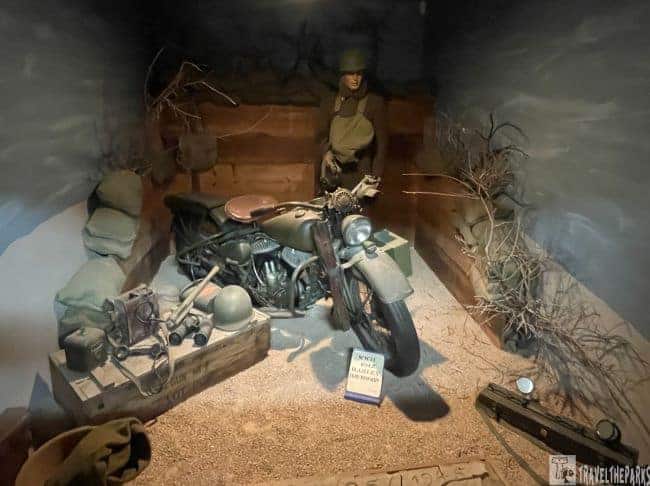
World War Exhibits
The 88th Glider Infantry Regiment was stationed here during World War II (1943). The exhibits included Nazi artifacts and memorabilia. Some may find the displays in this room somewhat disturbing. Later exhibits had Ku Klux Klan items on display, highlighting the turmoil experienced by our nation. This may be offensive to some, but it is a part of our history and should not be ignored. Learning from our mistakes can help us avoid repeating them.
The German soldiers of Rommel’s Afrika Korps POWs were kept at Fort Meade. Many of these prisoners were happy to be away from the poor living conditions of war. They developed craft items that are shown at this museum. The surgical tools were especially interesting, and also frightening to me. The needles were huge-OUCH! I could not imagine how unsterile the conditions must have been. There is even a section dedicated to the Women’s Corps (WACs). The crisp uniforms worn by the women of the time looked very vogue.
One room set up as a typical parlor in the WWII era was a tad creepy. It had period mannequins dressed in fancy dress clothing and dolls. Maybe I’ve watched too many horror films.
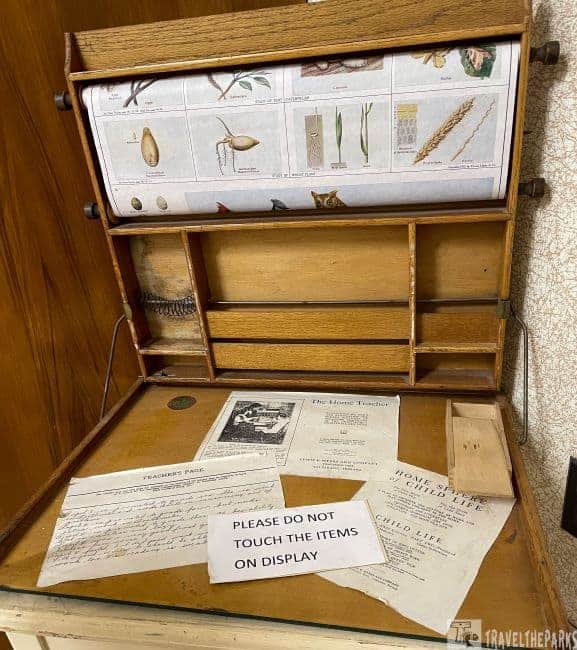
Second Floor Auditorium
The second floor features a small auditorium adorned with the various flags flown at Fort Meade. Along the wall, a series of glass cases displays archaeological artifacts — items that, interestingly enough, were uncovered during the construction of the parking lot.
While the museum doesn’t offer numerous kid-focused exhibits, there is a designated children’s corner on this level. Kids can draw, explore hands-on activities, and even place a pin on a world map to show where they’re from. Younger visitors would likely gain a better feel for frontier life if they had the chance to interact with more immersive items, such as the late-19th-century teacher’s desk on display.
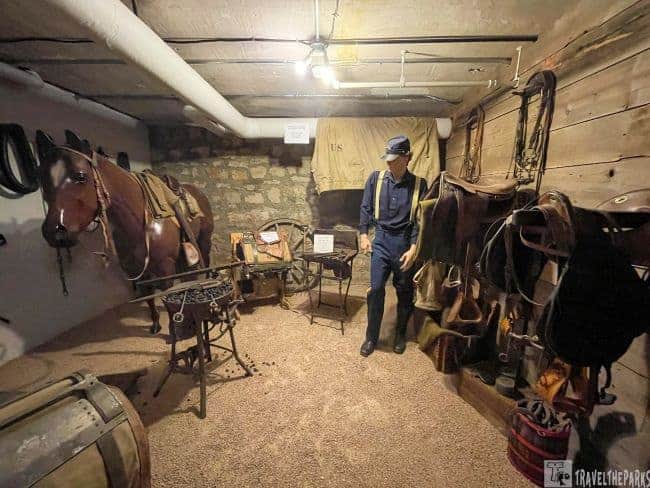
Basement Diorama Rooms
Don’t skip the basement level, where several life-sized dioramas bring both frontier life and World War II to life. One room is arranged as a period blacksmith shop, complete with tools and workbench, while another showcases early prairie farm equipment like iron plows, scythes, balers, and other rugged implements used by settlers.
Two additional rooms shift forward in time to the WWII era. One is staged as a military hospital room, offering a glimpse into wartime medical care, while the other features a 1942 Harley-Davidson motorcycle and a soldier messenger set inside a bunker scene — a compelling snapshot of history in motion.
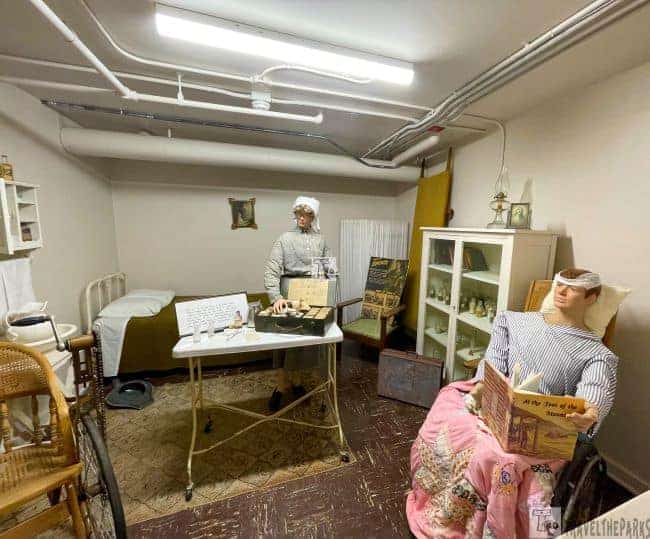
Today, visiting the Old Fort Meade
Even though the fort is no longer active, the South Dakota National Guard continues to use it as a military installation. It serves as a training site for the 196th Regiment of Officer Candidate School and a Veterans Health Administration hospital. Training is required to determine whether someone is physically and mentally capable of becoming a commissioned officer.
Many of the original turn-of-the-century buildings surround the parade grounds. Today, they used many of the buildings for offices, dormitories, or administration. The old theater, gymnasium, and horse stables are not open to the public at this time.
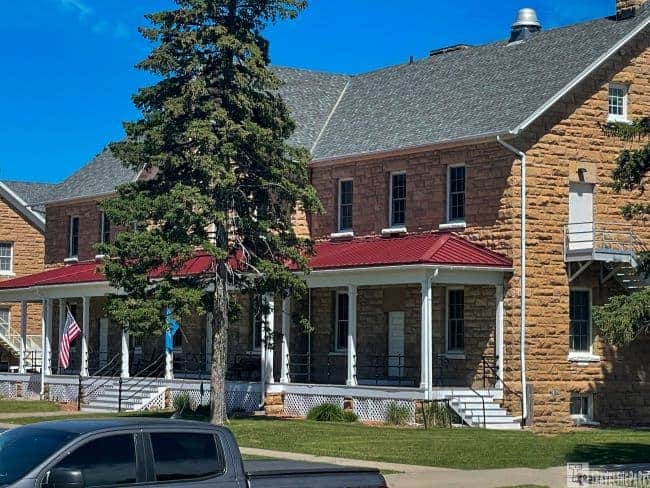
Did you know!-Interesting Facts on Old Fort Meade
Did you know that our national anthem, the Star-Spangled Banner, actually got its start at Fort Meade? At his wife’s suggestion, the 8th Cavalry’s Colonel Caleb H. Carlton, who served at the post in 1892, directed people to stand and pay proper respect to the “Star-Spangled Banner” at evening military ceremonies before it became the National Anthem. They dedicated a historic marker on the parade grounds, telling the story behind the anthem.

Alice “Poker Alice” Tubbs was a colorful character who smoked cigars and won her way in a man’s world through cards. Managing her debt through poker after her husband’s passing in 1910. Highly educated and respected, she was a legendary lady who did not work on Sundays. The saloon establishment, or “Poker’s Palace” resort that she operated, created great tension for the officers at Fort Meade. Not only did she solicit gambling and liquor, but she provided women as well. Eventually, a minor riot ended with her arrest after she shot the man. However, the establishment did not prevail even after being found not guilty since it was self-defense. She continued to play poker and ran a bordello in Sturgis until her death in 1930 at the age of 79.
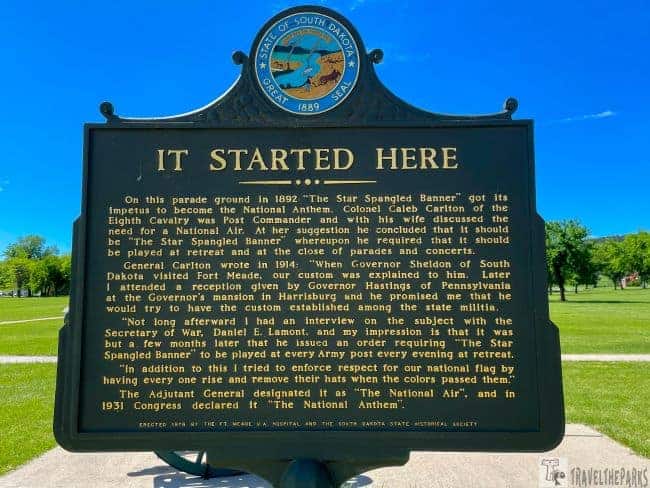
Note: Always bring plenty of water walking the parade ground in the hot summer.
Old Fort Meade National Cemetery
Behind the parade grounds and just up the hill lies the Fort Meade National Cemetery, established in 1878. Among those buried here is Private Abram B. Brant, a Medal of Honor recipient who served with the 7th U.S. Cavalry and was killed in action at the Battle of the Little Bighorn. The cemetery is located about two miles away along Old Stone Road and spans just over two acres. Although no new interments are permitted, the grounds serve as the final resting place for 235 soldiers and family members.

Final Thoughts: History at the Old Fort Meade Museum
If you find yourself in Sturgis, South Dakota, and love history, we recommend taking some time out of your schedule to visit the Old Fort Meade Museum. Give yourself plenty of time to walk and read the useful information. Though an old museum, it has varied exhibits for all interests. This trip can easily be combined with a drive down the scenic Spearfish Creek Byway or a visit to Devils Tower in Wyoming.
Have you visited this museum before? Would it make your itinerary on your next trip to Sturgis? We’d love to hear your thoughts—feel free to share any questions or comments below!


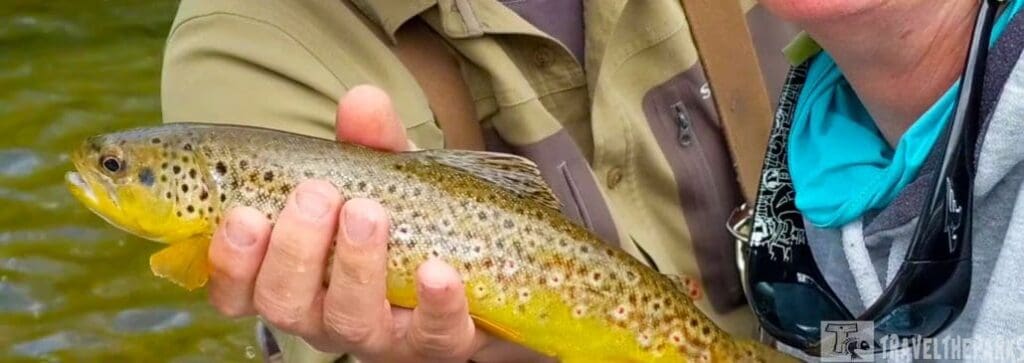
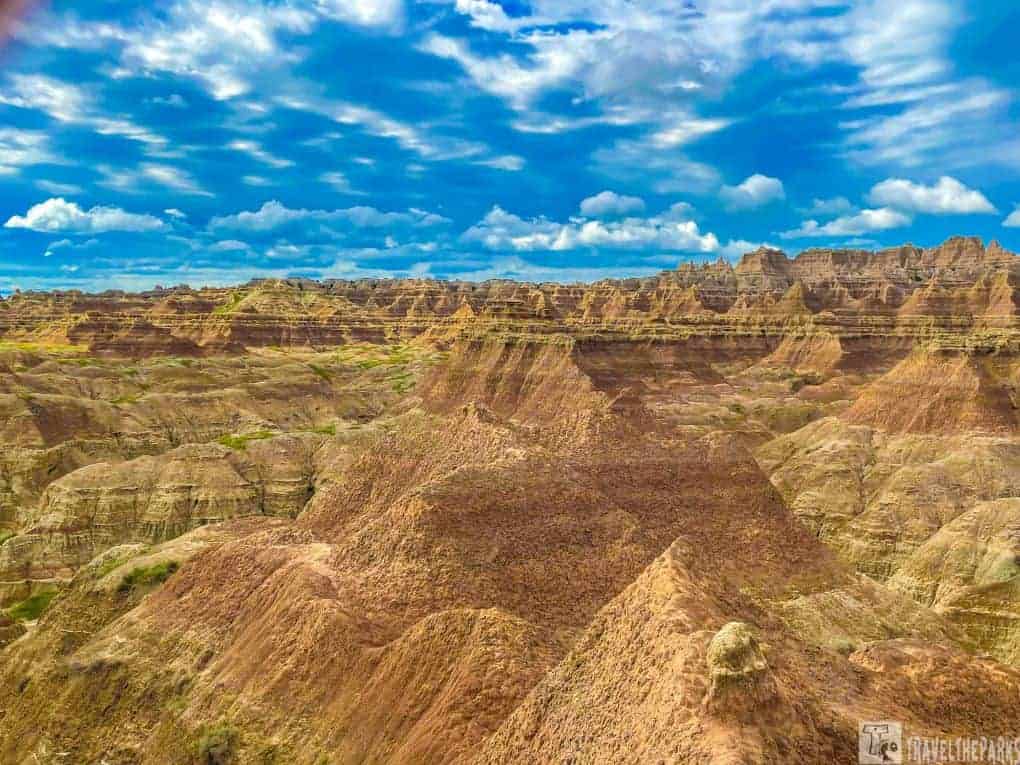

David Grommet
Very interesting place to visit didn’t take very long . Something cool to check out.
Travel the Parks
Agreed the history was very interesting and worth the time to stop and see!